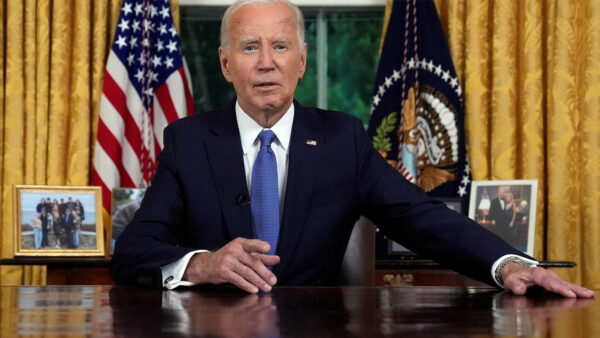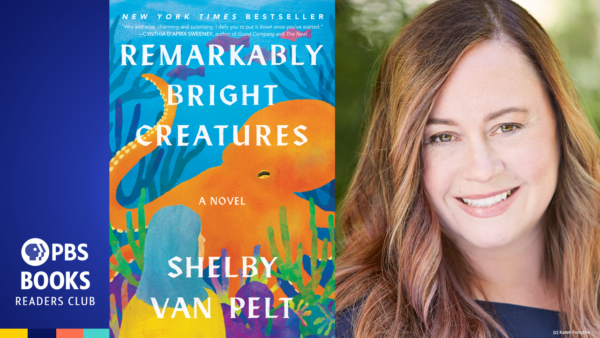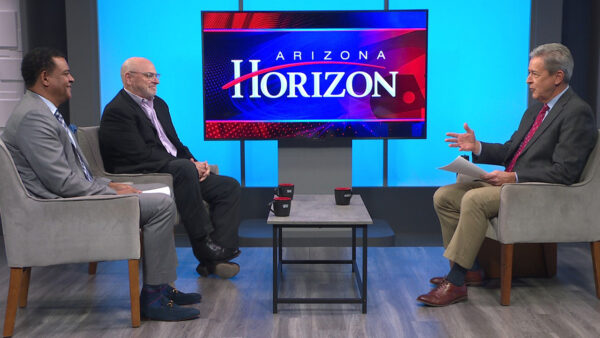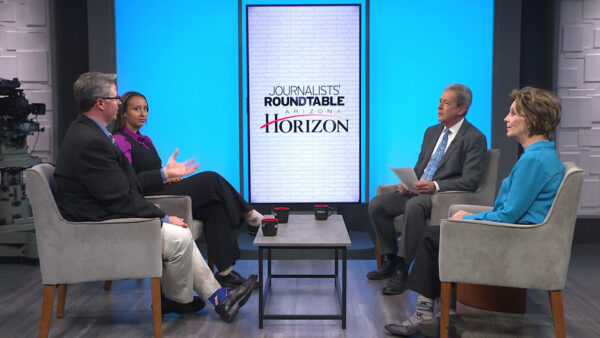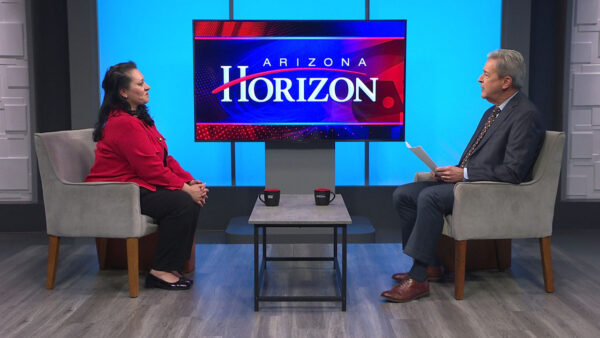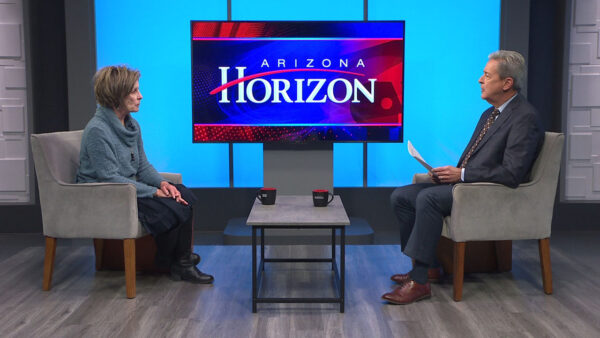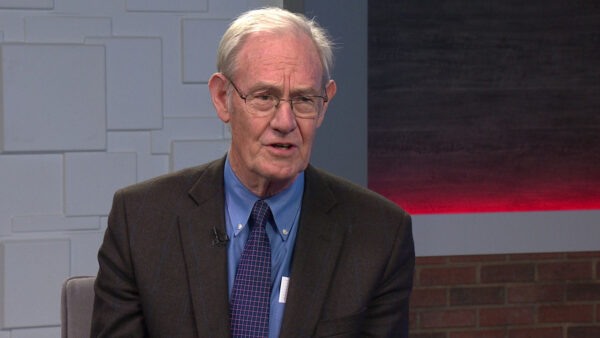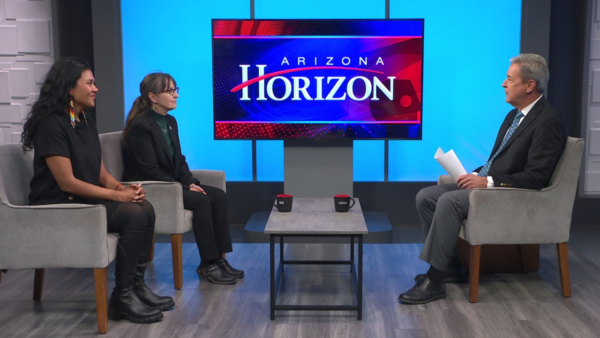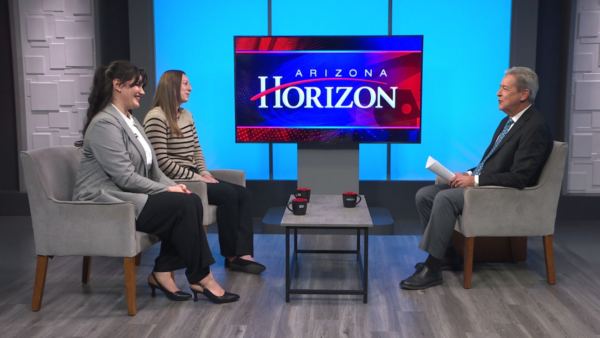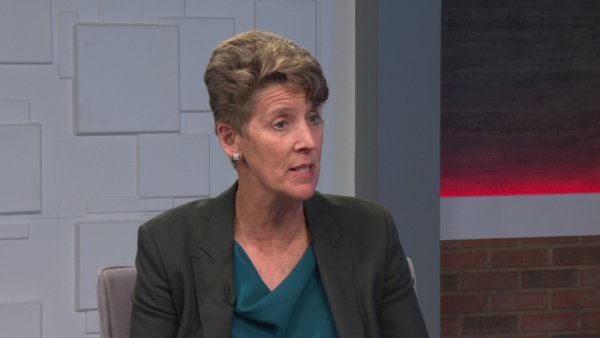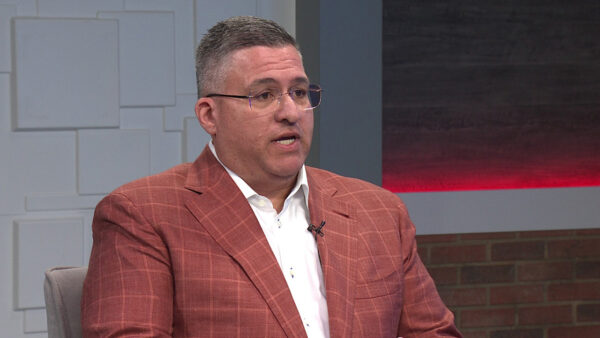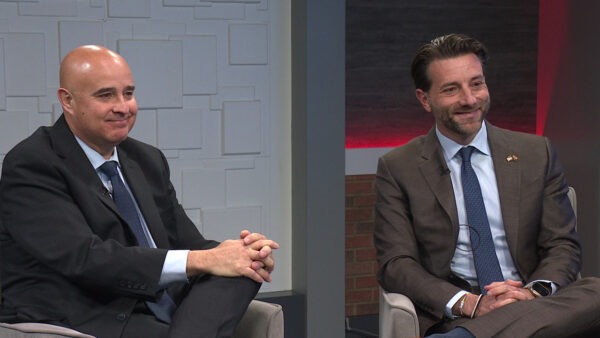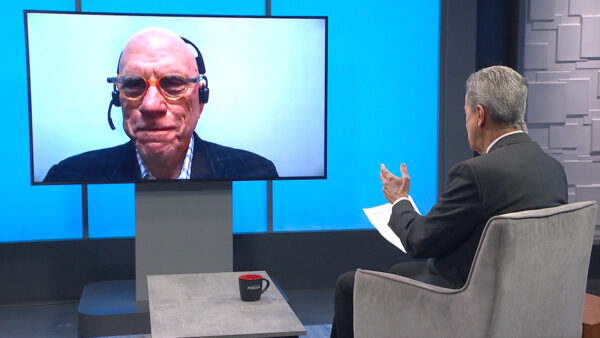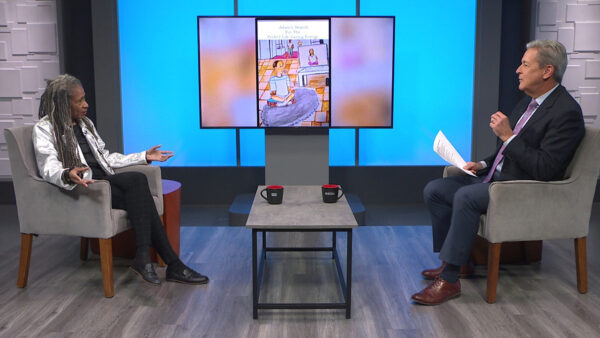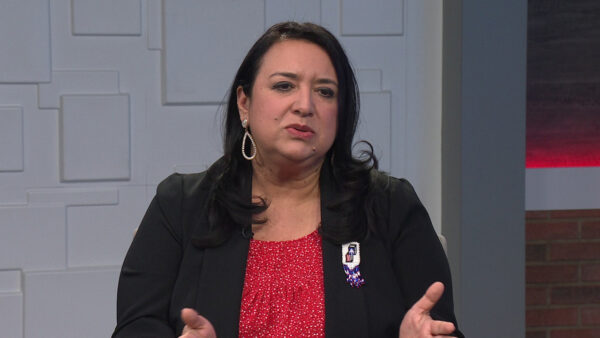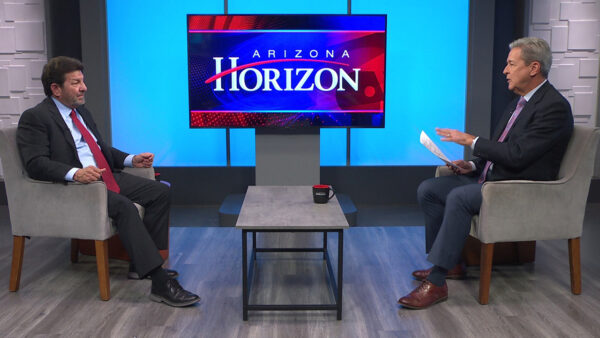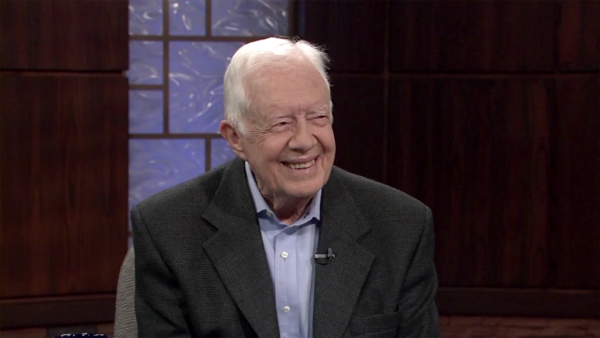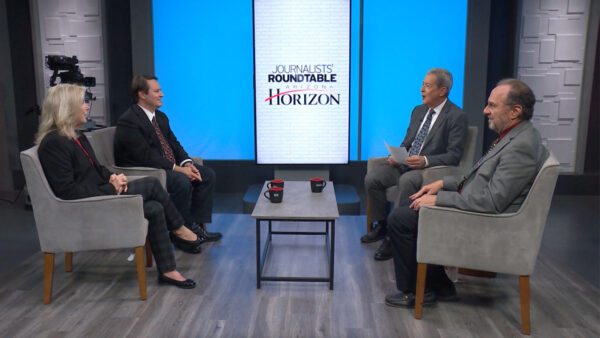Phoenix Children’s Hospital has been named to the 2015-2016 U.S. News and World Report Best Children’s Hospital List rankings. The hospital’s president and CEO, Bob Meyer, will tell us more about the rankings.
TED SIMONS: Coming up next on "Arizona Horizon," Phoenix Children's Hospital receives some national recognition from a study by "U.S. News and World Report."
And we'll hear from the author of a new book on the history of the Bill of Rights. That's next on "Arizona Horizon."
VIDEO: "Arizona Horizon" is made possible by contributions from the Friends of Eight, members of your Arizona PBS station. Thank you.
TED SIMONS: Good evening and welcome to "Arizona Horizon." I'm Ted Simons. Phoenix Children's Hospital is prominently noted in "U.S. News and World Report's" latest national rankings of children's medical institutions. Joining us now is Bob Meyer, Phoenix Children's Hospital's president and CEO. Good to see you again, thanks for joining us.
BOB MEYER: Thank you.
TED SIMONS: Well, congratulations on this. This is a national list of best children's hospitals?
BOB MEYER: Yeah, it's put together every year. There's 184 hospitals that are asked to submit data, patient volumes, etc., that could be used to analyze where you rank on a relative basis. We're pleased we're ranked, there's 10 specialties, we're in the top 50 in nine out of those 10 specialties.
TED SIMONS: I was going to ask how the survey does go about ranking hospitals. Is it clinical outcomes?
BOB MEYER: Quality indicators, outcomes, variety of things. Some reputational score. In fact, one of the reasons why I think younger hospitals like Phoenix Children's are moving up in the rankings is there's less reputation, more factual based outcomes, which is very beneficial for hospitals that are younger.
TED SIMONS: And we should mention that "U.S. News and World Report" does this mostly for their readers to know where to go or what to look at, correct?
BOB MEYER: It's very similar to colleges and they do a lot of rankings of this nature but it is to tell people, consumers, based on this objective data, where would the best places to go in your localities or regions, etc.? So yes, that's exactly what they put it together for.
TED SIMONS: I saw that efficient and coordination of care, delivery was also prominent.
BOB MEYER: Taking care of children in a holistic manner. Many of our patients have chronic illnesses. We see them for long periods of time. So again, all of the above is what they evaluate.
TED SIMONS: And including resources like nurse staffing, things like that?
BOB MEYER: Oh, nurse staffing, your programmatic development, what type of imaging equipment you have, it is very, very comprehensive on the objective side of what they're looking for.
TED SIMONS: And as for reputation, who exactly asked about that? Whose opinion counts there when they talk about a children's hospital's reputation?
BOB MEYER: Well, actually they send out a survey to our peers, when I say our peers, about 5,000 pediatricians and pediatric specialists around the country who are asked to rank the various children's hospitals and it's a little bit subjective but again, a pretty accurate we think assessment from a reputational score.
TED SIMONS: And that -- you mentioned that the younger hospitals are moving up because of their reputation. Reputation is big as far as children's health, isn't it?
BOB MEYER: It is very big, and it's why if you look at the very top ones, there are the eastern children's hospitals who have been around for 150, 200 years, children's hospital of Pennsylvania, etc. but again, that reliance, it was 50% reputational, 50% objective. It's now about 85-15. It's much more objective.
TED SIMONS: And Phoenix Children's Hospital ranking nine of the top 10 categories, it was ranked in nine out of the top 10. Neurology, neurosurgery, 14th, cancer 16th. These sorts of things. Talk to us about advancements out there and how you look on improving those rankings.
BOB MEYER: Well, I think it's continually improving your programs. We're very focused. We have four programs that are in the top 20 in the country. And they're very focused. We call our centers of excellence, we put a lot of emphasis on them, recruiting physicians, technology, so it's a lot of leading edge things that have been acquired but again, we recruited very heavily from around the country to bring in top specialists. This is the fourth largest children's market in the country. And so we should have a children's hospital that's comparable to those other cities. That's what we've been trying to build.
TED SIMONS: And we should mention along with neurosurgery, cancer and cardiology and heart surgery, 16th, nephrology, 17th, not bad. How do you improve those?
BOB MEYER: We continue to add to those programs. I think adding more physicians but more specialization. Good example is there's some very specific imaging equipment we're looking at for orthopedics as an example, which uses no radiation. So if we were to acquire that technology, again, increases our scores, etc., potentially our rankings.
TED SIMONS: And as far as children's health at the Phoenix Children's Hospital, talk to us about what you guys have been doing in the past, advancements that have been made and what you're looking for now in the future.
BOB MEYER: Well, I think a lot of the advancements have been in technology. So, for example, we just announced a large genomic joint venture. We believe that's sort of the future of medicine, so to speak and will cross all the service lines, all these programs that we're talking about. So we're recruiting physicians with genomic background in neurology, in cancer, in heart, etc. Look at it very simply, it's a genomic service line. Again, it will be a major enhancement to those programs.
TED SIMONS: And as far as what Phoenix Children's Hospital takes from the survey, you look over something like this, you see the numbers, you've got to be pleased. What do you take from it?
BOB MEYER: Well, I think it shows very, very well because the "U.S. News and World Report" has also given us analytics that tell us where we didn't get points, where we rank against the people in front of us, so to speak. And so those are decisions we need to make as to whether or not we're willing to make those kinds of investments and going back to my example of that piece of imaging technology. No radiation is a big deal.
TED SIMONS: Yes, it is. You've got a children's hospital and some folks say what's the difference between going to a children's hospital, a specific children's institution, pediatrics and going to a mainline hospital that deals in pediatrics?
BOB MEYER: I think the biggest difference is everybody that's at a children's hospital is specifically to taking care of children. The technology is adapted to children, etc., they're not just small adults. The actual technology is different. But more than anything it's the people that are involved. They're there for one reason, which is to take care of children. We also see it in volunteers. We see it in our donors, etc., there's just a tremendous amount of interest in it. So again, when you look at our centers of excellence, they're completely pediatric focused.
TED SIMONS: We've heard in the past that Arizona in particular, but around the country, is there a shortage of doctors, are you seeing that in pediatrics as well?
BOB MEYER: Very much so. One of the things we do, we actually do three things. We do clinical care, education and research. So you hit on our educational pitch. So several years ago there were only three pediatric fellowships in Arizona, which are how you create pediatric specialists. So our two have now become 14. So when you get into what differentiates a children's hospital, we're now educating specialists in 14 different specialties and we actually have three more fellowship programs on the approval process. So again, it's a highly differentiated, as to how you get these physicians because if you don't do fellowships, you have to continually recruit from out of state and that's a very, very cumbersome way to go about it.
TED SIMONS: It may be a cumbersome way but when you wind up on the "U.S. News and World Report" rankings, makes it a little easier I would imagine?
BOB MEYER: Well, yeah, but the reason you can do the fellowships is you're bringing in people that can do some of this teaching and attract some of these people, as well. The hard one and I said this a lot, but the hardest recruit is the first big name. After that, they start to come because you've got the big name and more people want to be associated with that. We've seen that in cancer, we've seen it in neurosciences, very clearly in the heart program. We've got a lot of people coming here to work with the people that are here.
TED SIMONS: Well, it sounds like things are going very well. Phoenix Children's Hospital, congratulations on the rankings and I've got to think they're going to improve even more next year.
BOB MEYER: Well, we hope so. And, you know, we know where we can get some of those points so to speak so I think we'll see them improve yeah.
TED SIMONS: Well, congratulations. Good to see you again, thanks for joining us.
BOB MEYER: You're welcome.
VIDEO: The Colorado river has carved over 600 miles of canyons in southern Utah and northern Arizona. As sublime as these chasms are, to travelers, they posed a seemingly insurmountable problem. Just how do you get to the other side? A highway marker on U.S. 89a commemorates a successful effort that for nearly 60 years did just that: Lee's ferry. Pioneer John D. lee came here in 1871. He established a ferry service across the Colorado river at the only natural point for 600 miles. Lee seen here seated on his coffin was executed in 1877 for his role in the mountain meadows massacre when 120 immigrants heading to California were murdered in Utah. The ferry operated for 52 more years, transporting thousands of hikers, horses, wagons, and even small automobiles across the river. Only the railroad and finally, in 1929, the Navajo bridge, made lee's ferry obsolete. Today, the original Navajo bridge is reserved for pedestrians, while the new Navajo bridge built beside it in 1995 caters to cars and trucks. While the ferry itself is long gone, the name remains. Lee's ferry is now the terminus for thousands of awe-struck sightseers rafting on the mighty Colorado river.
Bob Meyer: President and CEO of Phoenix Children's Hospital.
